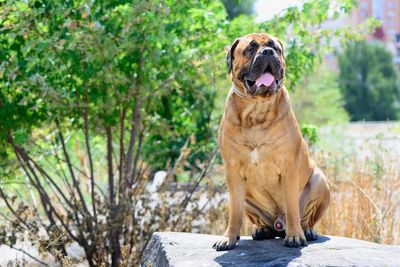The journey to controlling your dog's skin allergies....

The aim of this page is to explain the journey of controlling your dog's skin allergies. You may already be on this journey, or just getting started. You will notice there is NOT a single treatment plan for dog's skin allergies, we have various options and tools available. By reading through this page, and the rest of the website, you will be in a better position to work alongside your Vet in treating and managing your dog's skin allergies. We hope you find it useful!
STAGE 1 - Suspicion
You or your vet may raise suspicions about your dog having an allergy. Common reasons to be suspicious your dog has a skin allergy include;
Scratching, licking their paws, saliva staining on their paws or fur, scratching their ears, head shaking, repeated ear problems/infections, patches of fur loss, scabby skin, skin infections, darkened skin, greasy/smelly skin.

STAGE 2 - Initial Treatment
The priority is to identify and remove any infections (on the skin or in the ears) or parasites (fleas, mites, lice) if they are present. This might require testing (to identify an infection or parasite) or treatment based on your Vet’s judgement.
If there is no sign of infections/parasites or other problems, then we can go straight to alleviation - stage 3.

STAGE 3 - Alleviation
Nearly always requiring medication, to control the allergy. If working, your dog should become less itchy, lick their paws less and/or reduce the frequency of other skin or ear problems.
Sometimes, we can just use medication to alleviate the allergy as and when needed , or for some dogs they will need medication longer term. The initial question is to find a way to alleviate the allergy, finding out what works (or doesn’t work) for your dog. Your Vet will have a few options available and sometimes we have to try a few options to find what works for your dog.

STAGE 4 - Long term control plan
Skin allergies in dogs are a lifelong problem, so require long-term management. Many owners hope for a “quick fix” to allergies, but this does not exist. Unfortunately, skin allergies often require life long management.
Medication
Continued or intermittent use of medication to manage the allergy, with the option to attempt to diagnose/treat it further.
Rule out (or in) a food allergy
Consider performing a diet trial to rule out (or confirm) a food allergy.
Testing for environmental allergens
Consider diagnostic testing for environmental allergies (blood or intra-dermal skin test) to develop immunotherapy (desensitisation).
Immunotherapy (Desensitisation)
Once the allergens have been identified , desensitisation involves specially made injections being given regularly to try to stop your dog’s immune system from overreacting to the allergen. Unfortunately, it is not guaranteed to work and is successful in around 60% of dogs.
Maintain skin health
Improving and maintaining general skin health, with a good diet (or a specific diet if your dog has a food allergy), supplements (omega 3 and 6 fatty acids) and shampoo/mousses to help moisturise the skin.
Flea and parasite avoidance
Flea/parasite control. It is important to avoid anything that can worsen your dog’s skin. Particularly if your dog has an allergy to flea/insect bites. If your dog gets fleas, it's important to treat them promptly and properly.
Copyright © 2023 Itchy Dog Vet - All Rights Reserved.